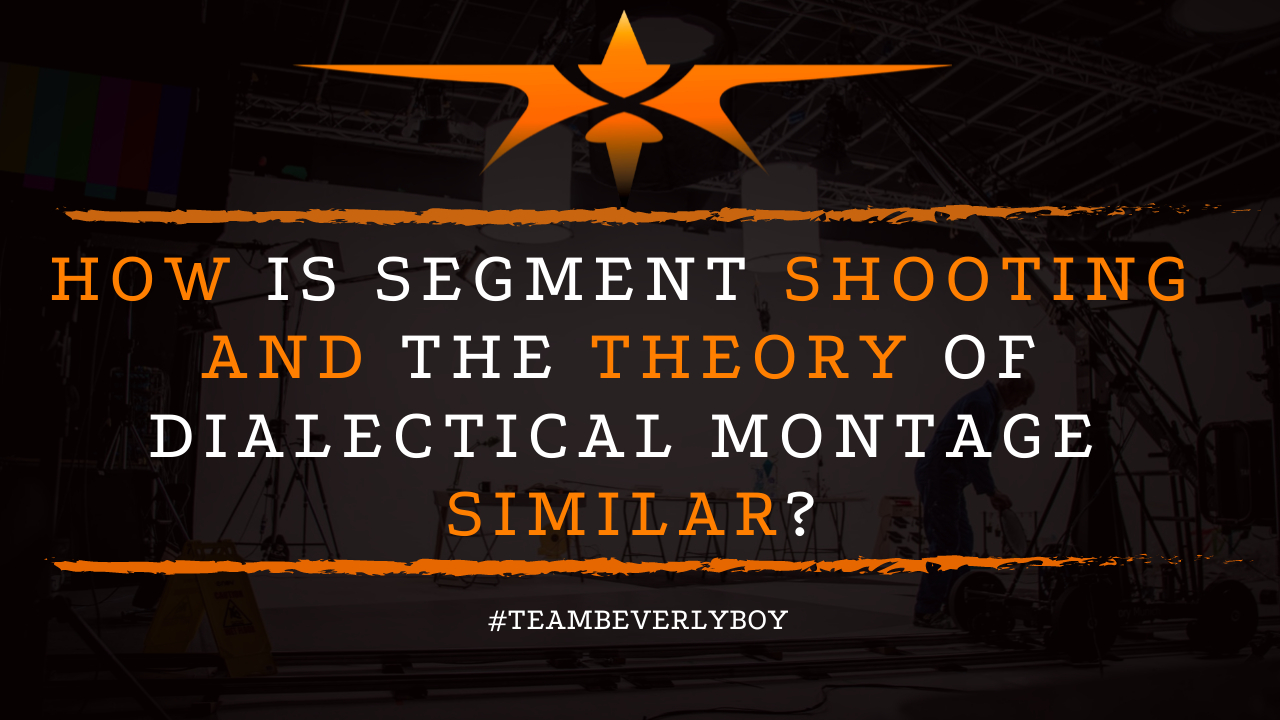
How is Segment Shooting and the Theory of Dialectical Montage Similar?
Some of the earliest instances of cinematic experience represent the juxtaposition of images into a montage of sorts to elicit a particular desired emotional connection or outcome. Segment shooting, similarly, represents the juxtaposition of multiple shots or camera movements and scenes together. To create a string of images in which a desired emotional connection or response is elicited. But how is segment shooting and the Theory of Dialectical Montage similar?

As we examine both film segments and montage theory, we’ll review the similarities between the two and what it means for filmmakers.
Segment shooting and the theory of dialectical montage though completely different concepts entirely, have some unique areas of similarity as you’ll see below.
What is Segment Shooting?
Segment shooting in film represents breaking the narrative down into individual sequences.
In which a series of shots juxtapose to produce a single segment. That is based on a common theme relative to the narrative.
Each film segment that is shot includes a series of sequences which are made up of many different shots.
And or camera movements that are filmed for the purpose of creating a single scene or segmentation. Which breaks down the narrative by a particular element.
Timeline
Segment shooting typically breaks the narrative down by chronological order. Capturing the series of shots in order as the timeline of events unfolds.
A segment of film narrative may be just a few shots juxtaposed to make up the thematic element or it could be significantly longer than just a few shots.
What is the Theory of Dialectical Montage?
So, how is segment shooting and the Theory of Dialectical Montage similar to one another in the film world? The fact is, these two elements are very different.
Segment shooting represents a filmmaking process in which a series of shots are captured in thematic relation from the chronological narrative of the film.
Whereas dialectical montage represents the juxtaposition of two shots.
Which may have thematic similarities that, when paired together? Result in the audience making a particular inference about what they see.
Thematic Relevance
Segment shooting and dialectical montage rely on thematic relevance to drive the inferences of the audience. And it works! Together, segment shooting and dialectical montage are similar.
In that these two very different forms of image juxtaposition have the power to elicit a particular connection by the audience. In which an inference is made to what they see.
While dialectical montage certainly has stronger power to result in the desired emotional inferences among the audience than segment shooting would.
The two forms of juxtaposition of imagery equally use a series of shots or images to elicit the desired outcomes.
In Summary
However, in looking at answering the question, “How is segment shooting and the Theory of Dialectical Montage similar?”
It’s important to note that without segment shooting, there would be no dialectical montage. As the montage represents juxtaposition of two shots or segments.
Reflecting some form of conflict in which there is thematic similarity and the outcome is a particular inference made by the audience.


